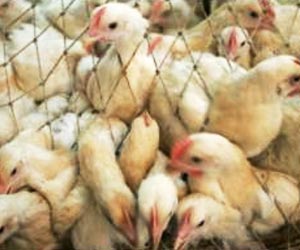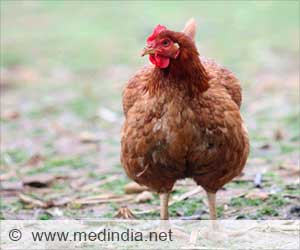A survey conducted by the St. Jude Children’s Research Hospital has found that there are key differences between the influenza virus that infect the bird and the humans.
A survey conducted by the St. Jude Children’s Research Hospital has found that there are key differences between the influenza virus that infect the bird and the humans.
The researchers used a mathematical technique to spot specific amino acid building blocks that statistically has more probability to appear in avian influenza virus proteins and those that are more probability to be in human influenza virus proteins. These differences can be used as markers to track changes in influenza virus that intimidate humans.These Specific mutations related to immune suppression and viral replications differ between bird and human flu viruses could be used to monitor emerging pandemics.
“Influenza mutates rapidly, so that any marker that is not the same in bird flu but remains stable in human flu is likely to be important,” said David Finkelstein, Ph.D., research associate at the St. Jude Hartwell Center for Bioinformatics and Biotechnology. “If human specific markers start accumulating in bird flu viruses that infect humans, that suggests that the bird flu may be adapting to humans and could spread.”
The researchers also found that various strains of the H5N1 that have infected humans are more likely to contain human markers than are H5N1 strains that have not infected humans. Only occasionally have H5N1 samples obtained from human patients shown any of these markers, and no H5N1 strain has permanently acquired any of them.
A report on this work appears in the advanced online edition of “Journal of Virology” (doi:10.1128/JVI.00921-07).
The investigators cautioned that there is no proof yet that the human markers in H5N1 and other avian influenza viruses directly contribute to the ability of these viruses to cause pandemics among humans; and H5N1 is not any more adapted to humans today than in the past. However, the fact that the bird viruses accumulate and retain these markers after infecting humans suggests that these changes are important. Therefore, scientists should monitor avian influenza viruses to see if they are acquiring human markers.
Advertisement
The researchers discovered these markers by computationally surveying the sequence of amino acids in 10,671 proteins from avian influenza viruses and 13,757 proteins from human influenza viruses. The survey identified 32 persistent markers that exist in five bird and human virus proteins: PA, NP, M1, NS1 and PB2. These markers stand out as obvious differences between bird and human viruses, and many appear in regions where host protein and viral replication occur. The researchers did not determine what functional role the markers play in the life of the viruses.
Advertisement
The St. Jude team also studied markers in influenza viruses that caused pandemics in 1918, 1957 and 1968—outbreaks thought to have been caused by avian influenza viruses that adapted to humans. The study focused on the viruses isolated from humans early in each pandemic in order to determine which markers the viruses had recently acquired just before they sparked the outbreak.
The researchers showed that 13 of the 32 markers identified by their survey had remained stable in these viruses, and, like the other viruses, these markers were distributed among PB2, PA, NP and M1—the proteins linked to virus replication. “This suggests that these 13 sites are required for pandemic influenza to fully function,” Finkelstein said.
The researchers also showed that the H1N1 virus that caused the 1918 pandemic—the most deadly pandemic known—already contained 13 of the 32 markers early in the outbreak; and acquired the other 19 markers within 10 to 20 years, acquiring the preferred human influenza amino acids in stages. Eventually, descendents of the pandemic virus became the seasonal flu outbreaks rather than deadly pandemics.
“While we can’t directly estimate how long it would take an avian virus such as H5N1 to acquire these traits, we can use these markers to roughly measure the distance between an avian influenza and a pandemic,” said Clayton Naeve, Ph.D., St. Jude Hartwell Center director and the paper’s senior author.
The current study used data obtained in part from the first large-scale study of avian influenza virus genomes, conducted at St. Jude’s Hartwell Center, which doubled the amount of genetic information available on the genes and proteins of these viruses. The aim of that project was to enable researchers to gain insights into H5N1 and to provide the first fundamental insight into the evolution of influenza viruses in nature—the source of all influenza viruses that affect humans, domestic animals and birds.
Source-Eurekalert
BIN/J









